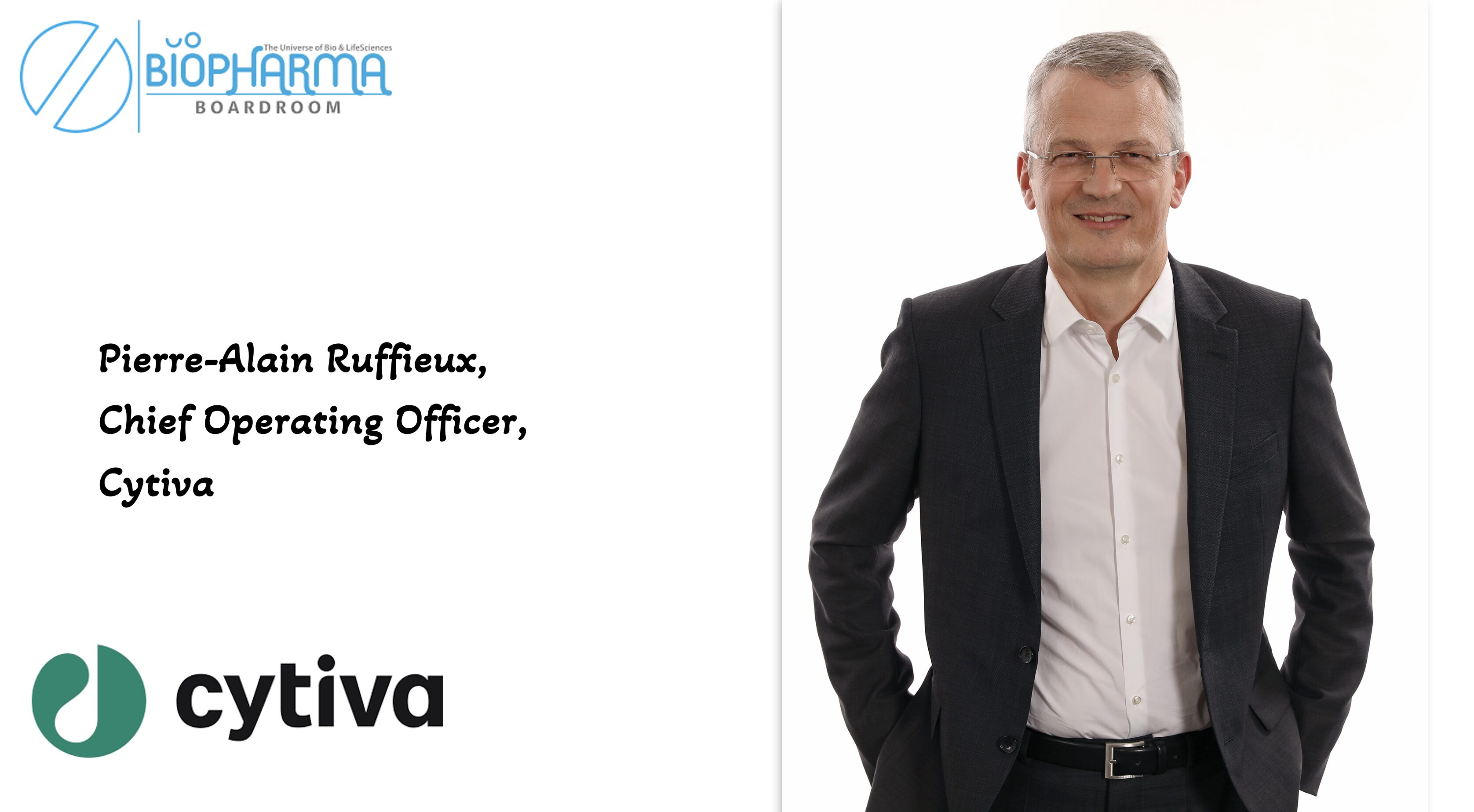01 July 2025 | Tuesday | Interview | By editor@biopharmaboardroom.com

Since 2019, Cytiva has committed over $1.6 billion to expand its global manufacturing capacity. In this exclusive conversation with BioPharma BoardRoom, Pierre-Alain Ruffieux, Chief Operating Officer at Cytiva, shares the strategic thinking behind this bold investment. He highlights how the company’s “in-region, for-region” approach is helping customers accelerate delivery timelines, reduce risk, and meet regulatory milestones, while also preparing for future advances in cell and gene therapy manufacturing.
Cytiva has invested $1.6 billion since 2019 in expanding global capacity—what were the key industry signals or bottlenecks that prompted such a bold and sustained investment strategy?
We are a global company operating in 42 countries. Expanding our capacity has been part of our long-term growth strategy for several years. Many of our customers asked us to bring our operations closer to them. There are three main advantages to customers with our capacity expansion: 1) we can increase speed of delivery to them; 2) we meet sustainability commitments as well as those of our customers by reducing CO2 emissions that would otherwise go to long transport; and 3) we help reduce risk in the supply chain by producing closer to our customers. In short: the completion of these projects is Cytiva delivering on our promise to help our customers deliver life-changing therapeutics.
How is the “in-region, for-region” manufacturing approach impacting delivery timelines and risk mitigation for Cytiva’s biopharma partners?
The biotechnology industry is experiencing a proliferation of new therapeutic modalities. The competition is fierce among drug developers to bring new therapeutics safely to market. Our “in-region, for region” manufacturing approach is designed to bring us closer to our customers’ manufacturing operations enabling faster delivery times and helping them meet regulatory milestones, in addition to being the cornerstone of our security of supply program.
Could you elaborate on the strategic significance of the new Muskegon, Michigan resins site and its long-term role in Cytiva’s North American operations?
Our Muskegon, Michigan will be the first site outside of Sweden to manufacture resins – which are critical in purifying and analyzing biomolecules so pharmaceutical and life sciences companies can make medicines. When you are servicing customers all over the world, you must be flexible and nimble, while also having a robust supply chain. Our expansion into Muskegon, Michigan provides us with that flexibility and brings us closer to our North American customers, while also providing security of supply for all of our global resins customers.
With filtration capacity ramping up in the US, UK, Puerto Rico, and soon South Korea, how is Cytiva preparing for regional demand shifts and regulatory alignment?
At Cytiva, we are always reviewing our business needs and preparing for regional demand shifts. One of the many benefits of having an “in-region, for-region” manufacturing strategy is providing our customers with local expertise to navigate regional market dynamics. We also offer regulatory services that help guide our customers through the evolving and intricate regulatory landscape. We are not just a supplier to our customers, but a true partner that is helping them through every part of their manufacturing journey.
What customer needs are driving Cytiva’s sharp focus on single-use bag manufacturing, and how are you ensuring supply security in this space?
The biotechnology industry is global and single-use technologies are used to manufacture the majority of biological medicines in pre-clinical and clinical manufacturing lines, so there is always demand. They provide many benefits to customers such as reduced risk of cross-contamination between batches because they are discarded after each use – this is particular important because maintaining product purity is critical. They also provide increased flexibility and scalability, as well as helping to create faster turnaround times because drug developers can scale up and scale down to meet changing demands. Single-use technologies also contribute to a more sustainable industry by reducing water and energy consumption that is needed to clean stainless steel systems.
To better ensure the security of supply for these products we have tripled production capacity in Beijing, China, doubled capacity in Duncan, South Carolina, and we have sustained capacity in Medemblik, Netherlands. Having multiple manufacturing sites assures our customers that we can deliver even if one site experiences capacity constraints.
From a genomic medicine lens, how are these infrastructure upgrades supporting future innovations in cell and gene therapy manufacturing?
Cell and gene therapies are complex medicines with equally complex and diverse manufacturing systems. Having a stable security of supply is critical for our customers manufacturing these advanced therapies and who are working with us to develop the tools and technologies needed for standardization and automation of workflows.
Looking toward 2028 and beyond, what new technologies or capabilities are being considered to future-proof Cytiva’s manufacturing strategy?
We are always reviewing our portfolio and looking for ways we can improve our manufacturing strategies. One technology that has a lot of potential is additive manufacturing. In addition to its sustainability features, additive manufacturing allows companies to make the most of cleanroom space. We are also looking at how we can use artificial intelligence and machine learning to improve our processes.


© 2025 Biopharma Boardroom. All Rights Reserved.